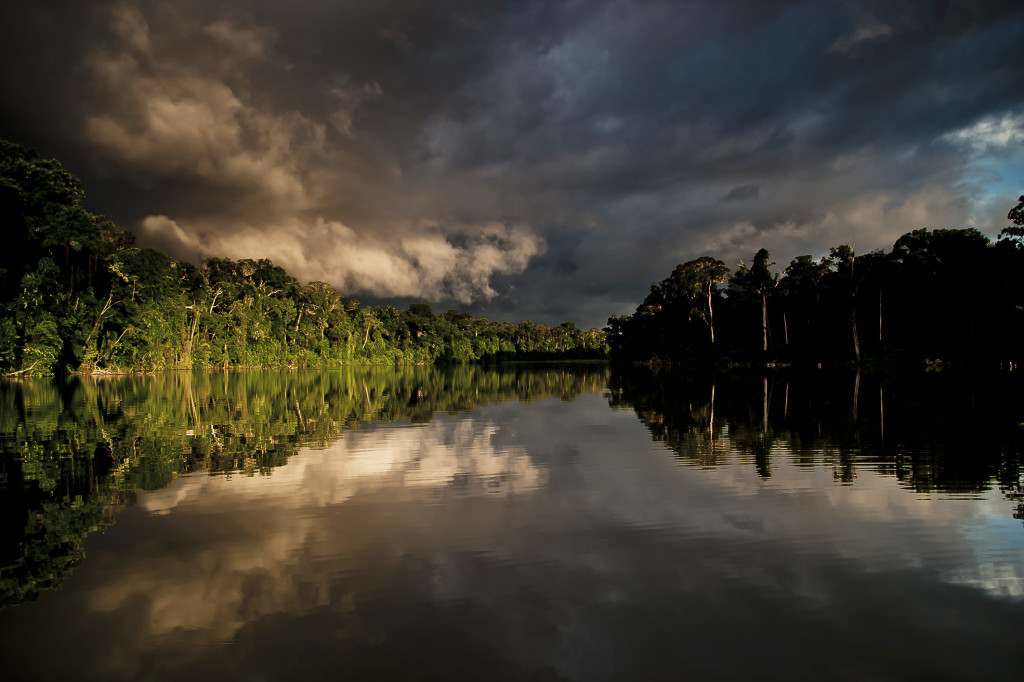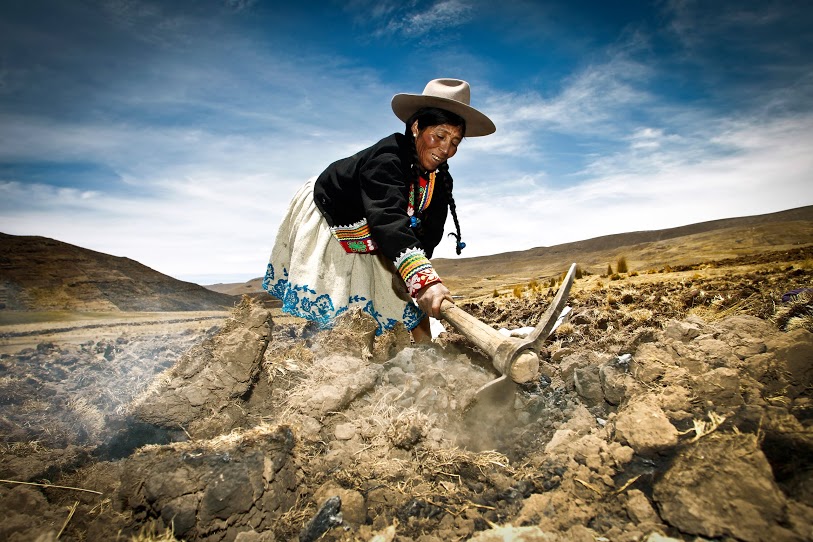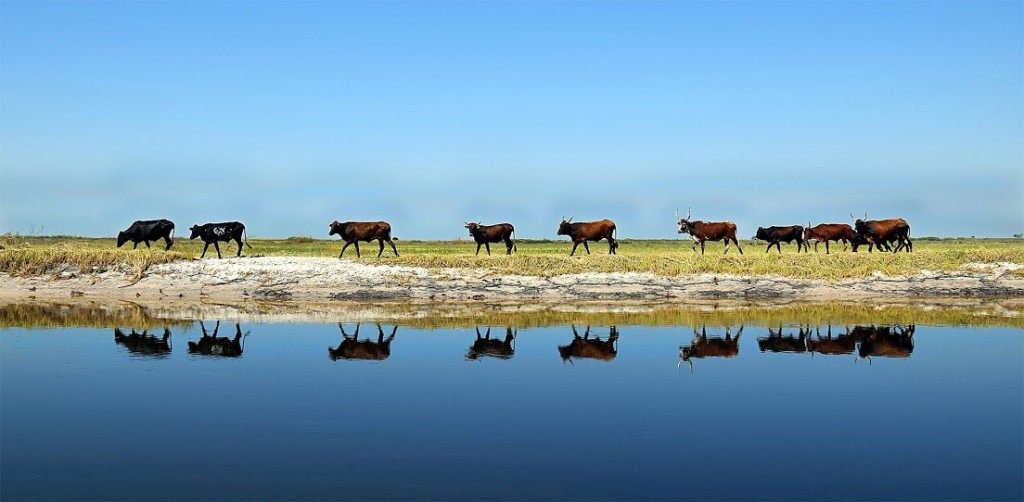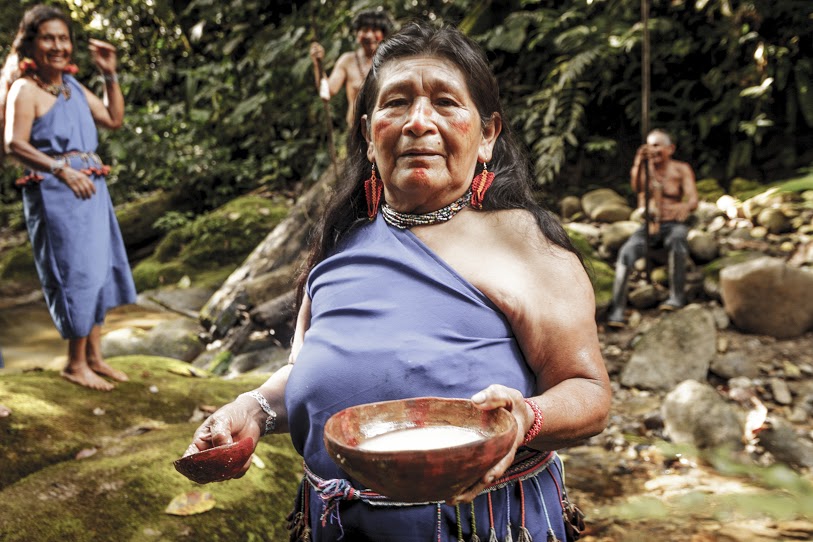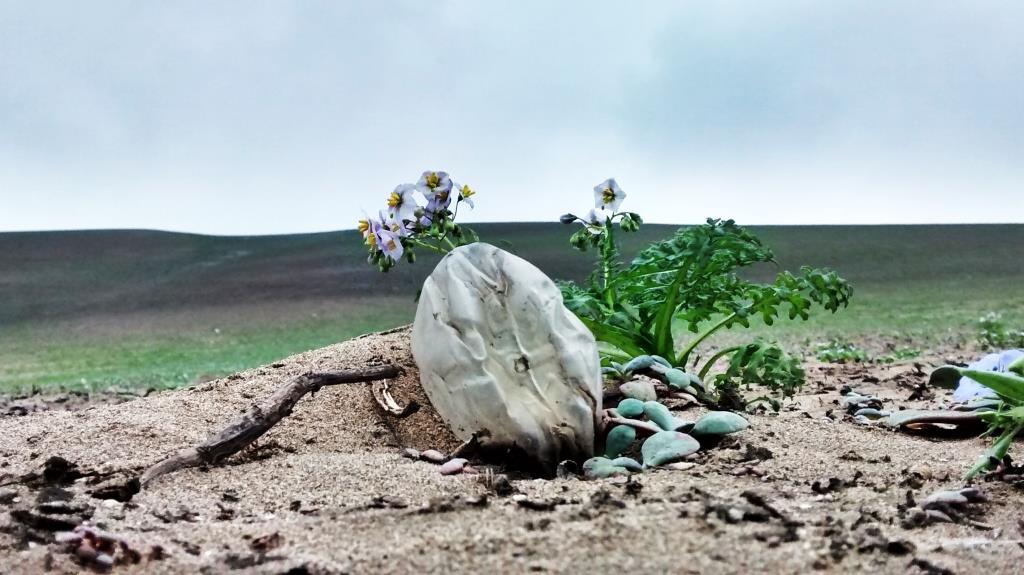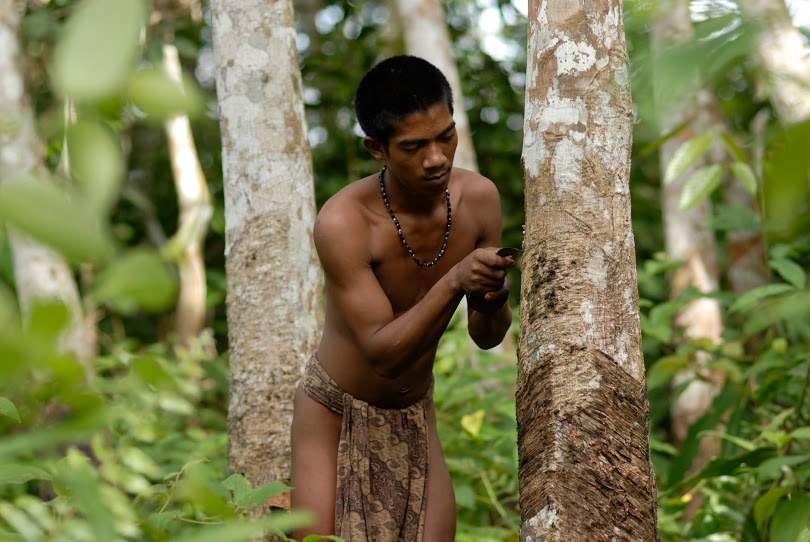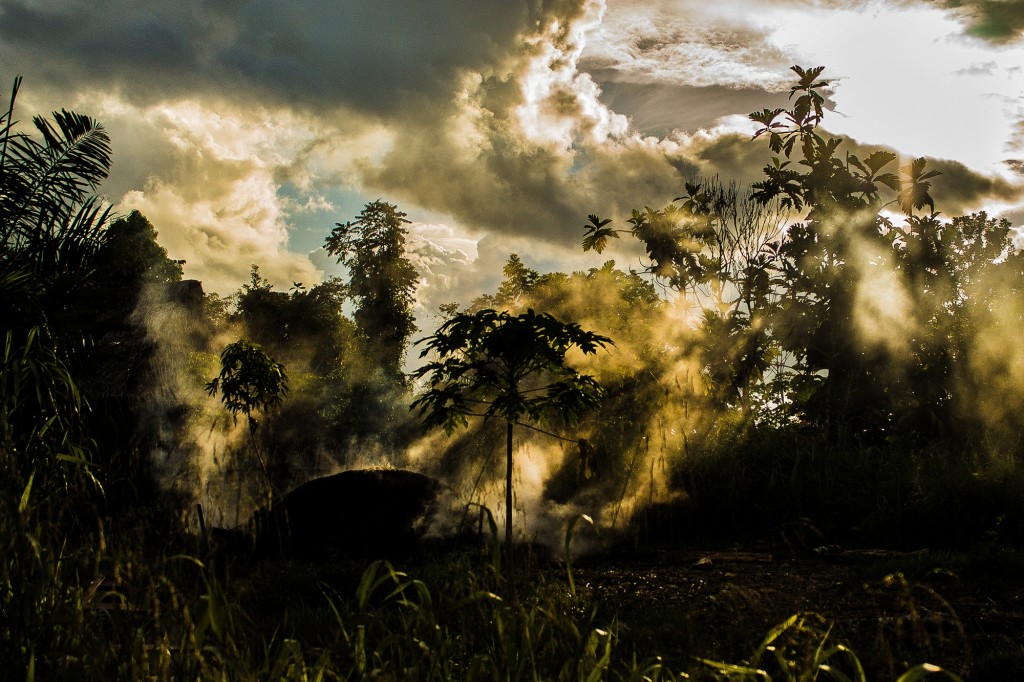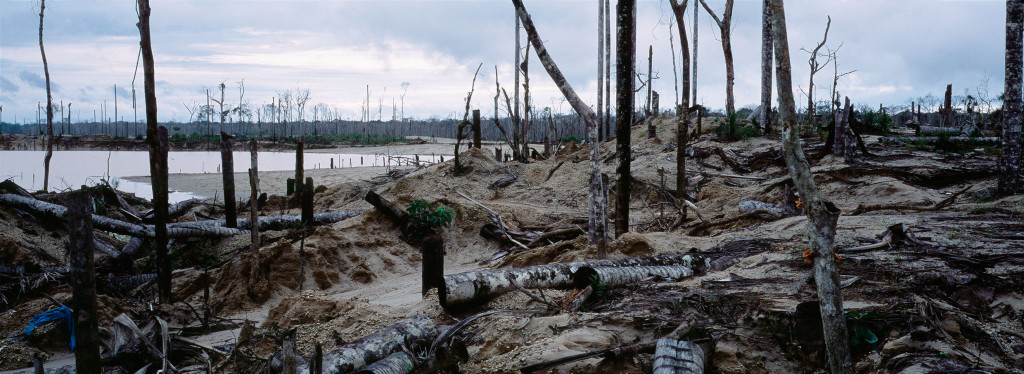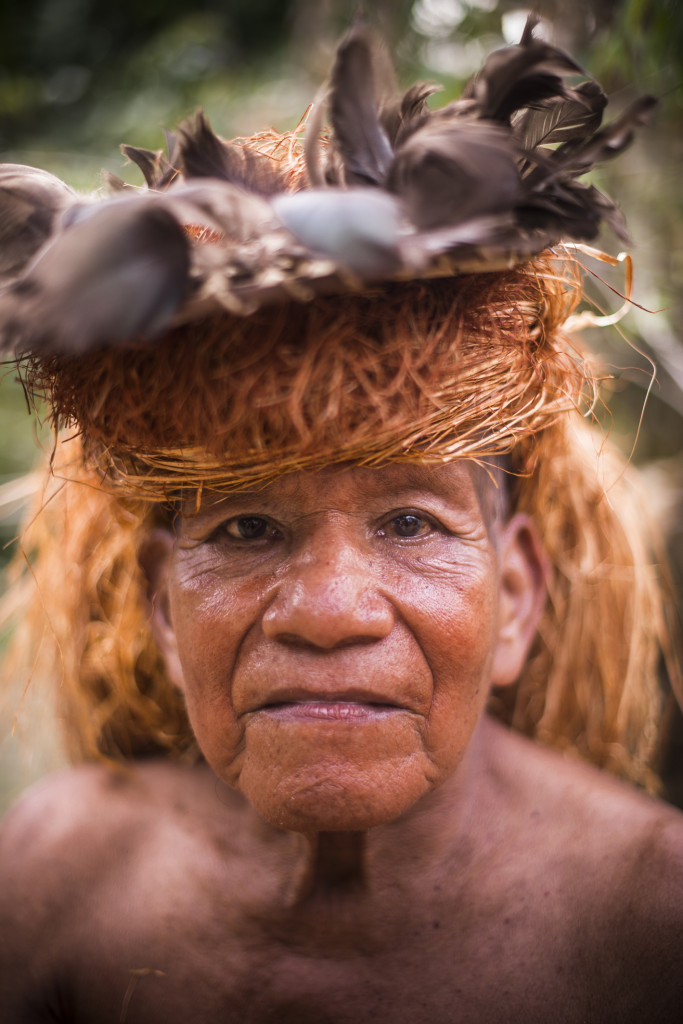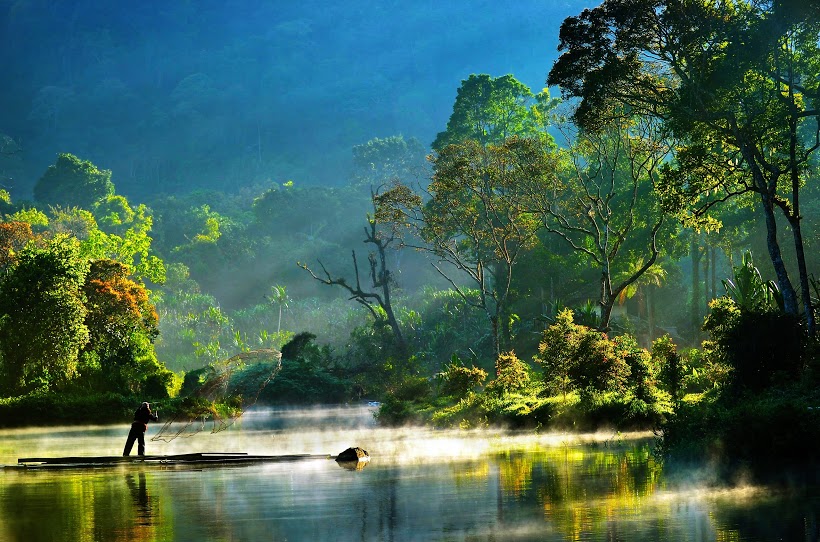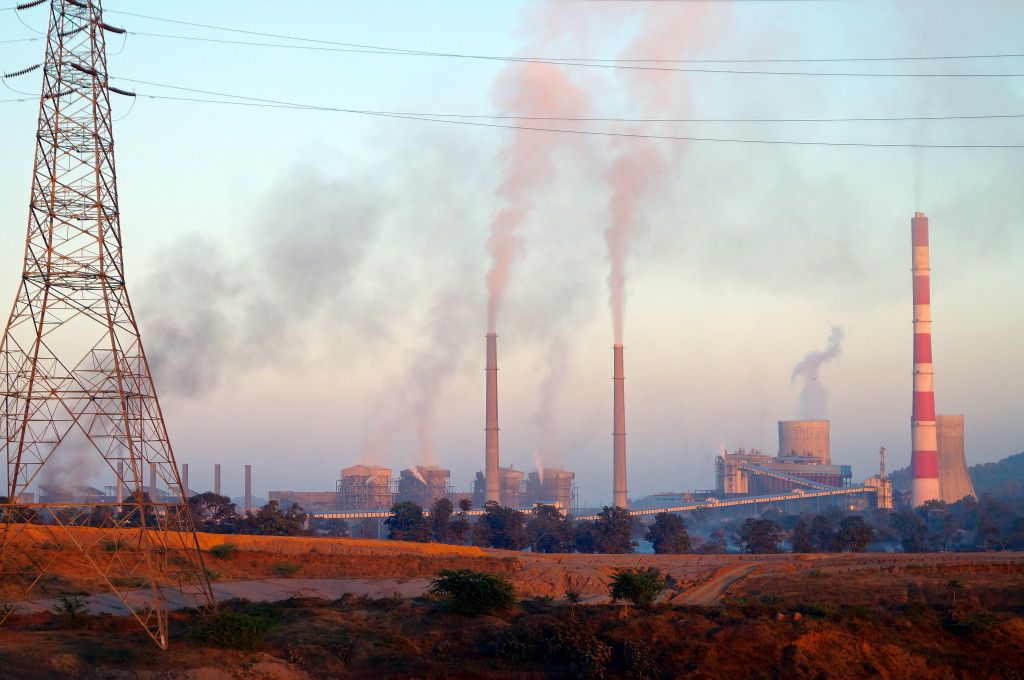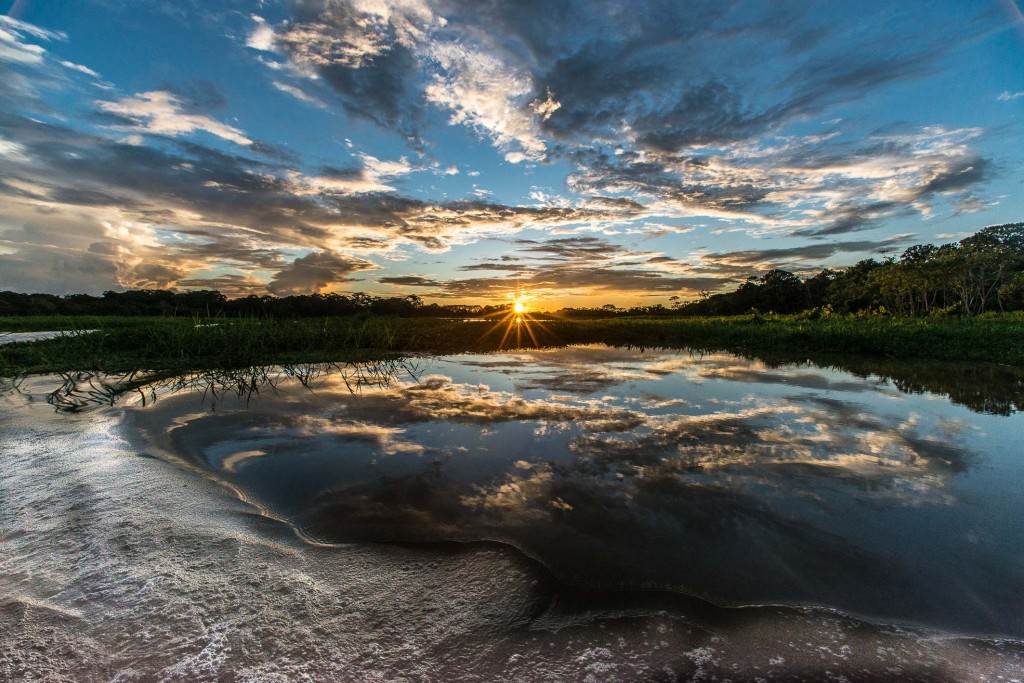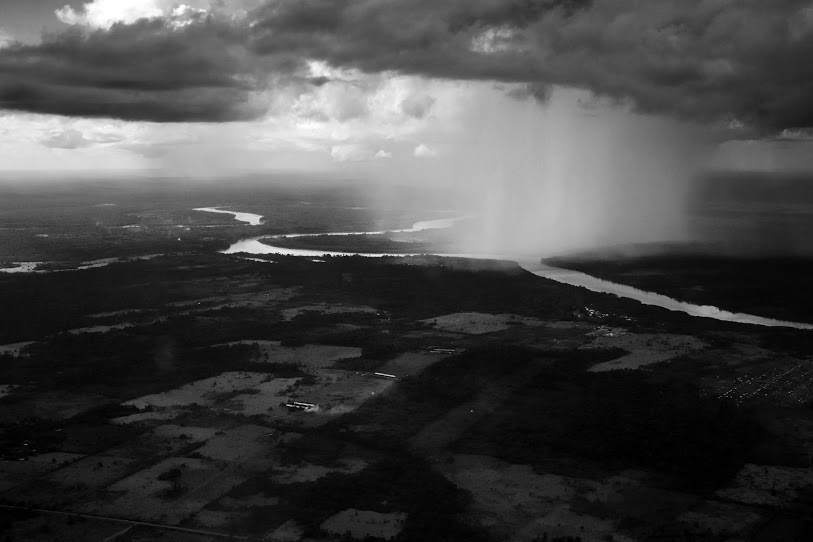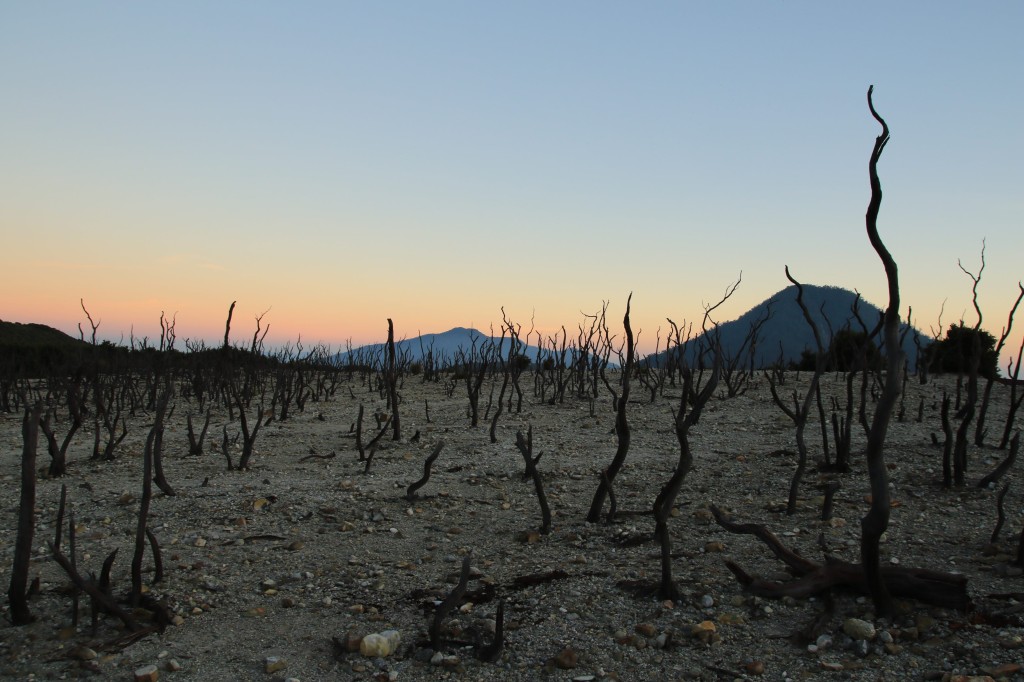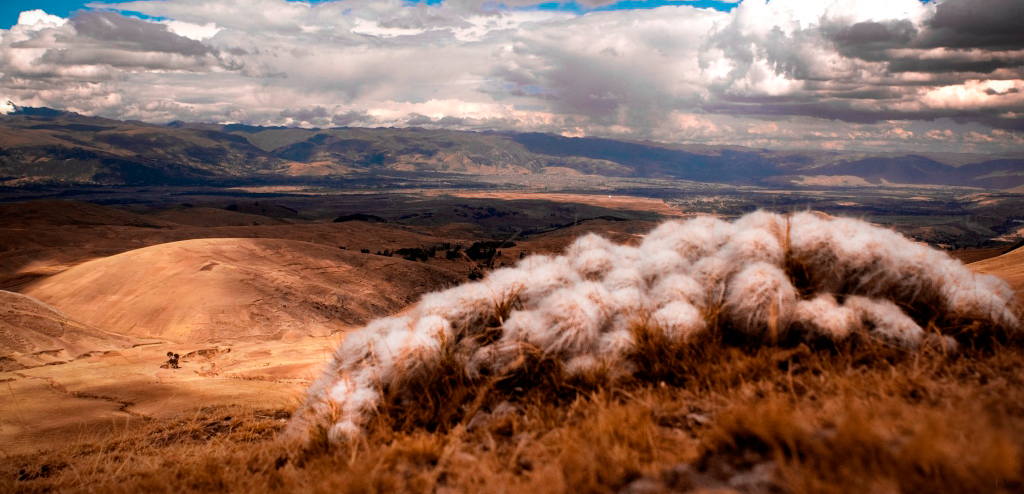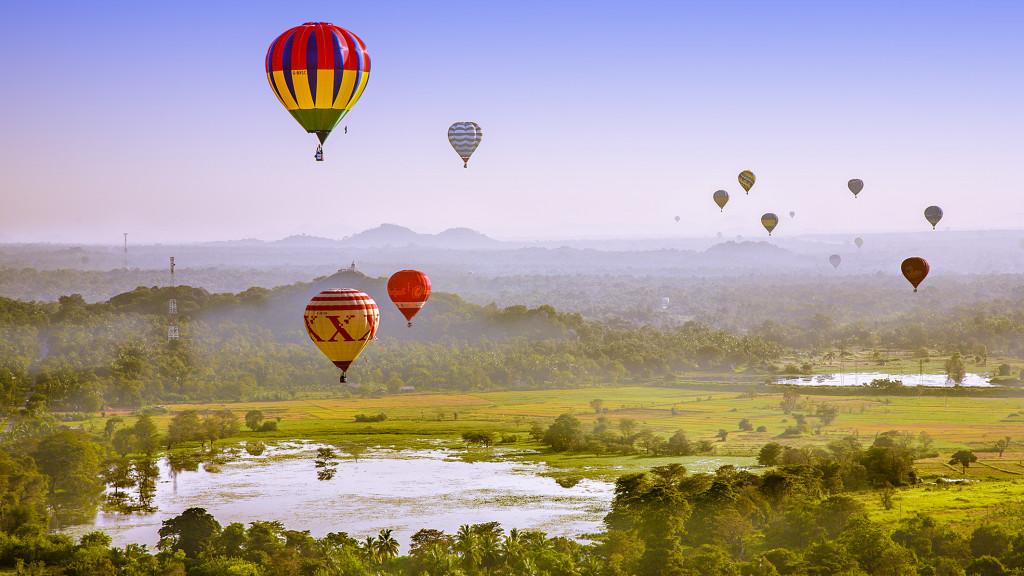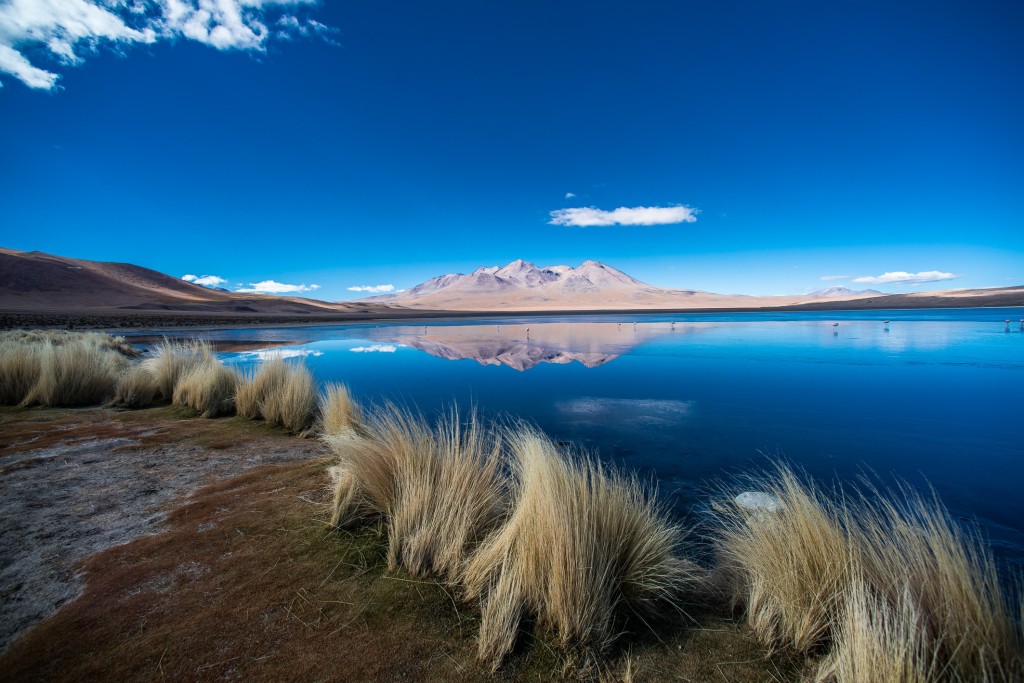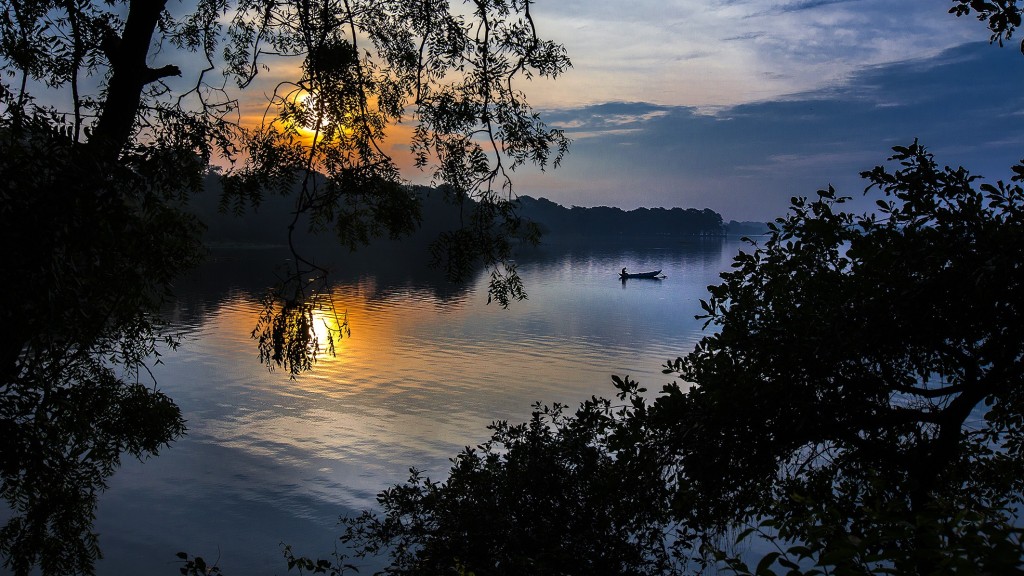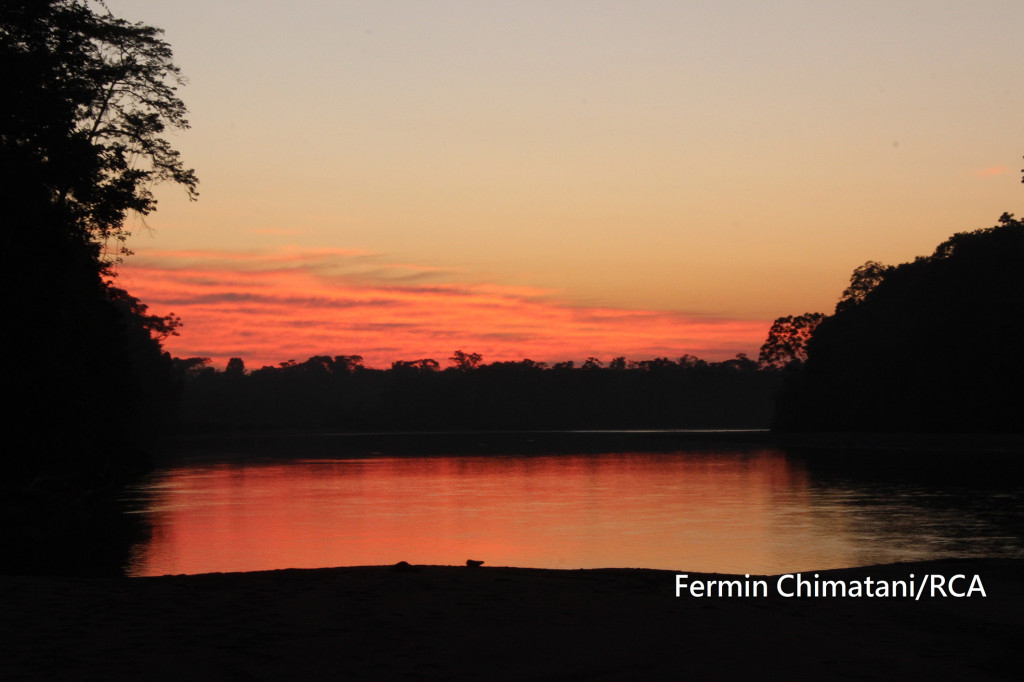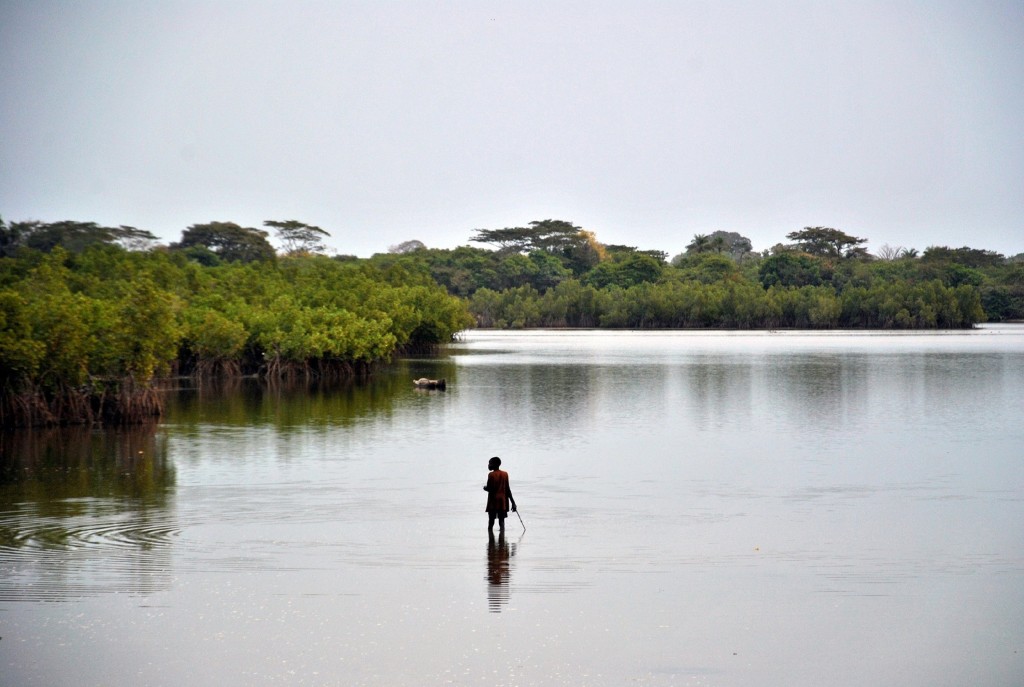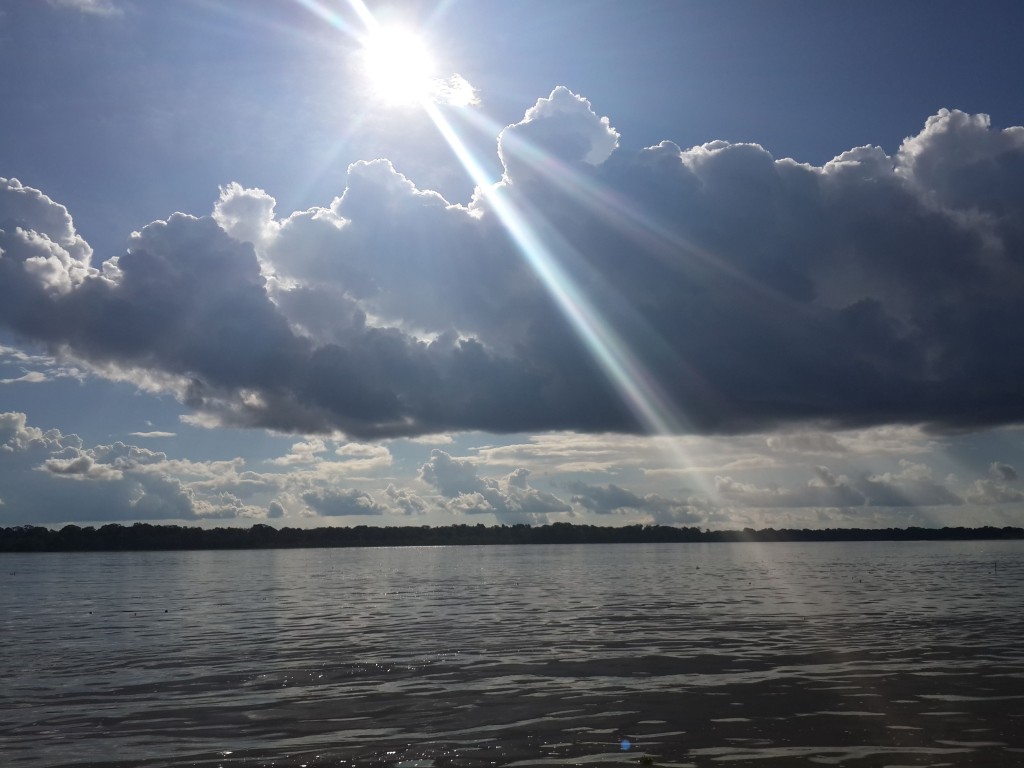Terraced rice fields of Yuanyang, China
Terraced rice fields near Yuanyang, China. Despite the growth in commercial, large-scale agriculture, most of the food produced around the world still comes from smallholder systems like these.
Photo: Mark Levitin
Water park
A water park in Lima, Peru. The Peruvian capital, lying in a desert, is already under severe water stress – and climate variability will make the water supply even more.
Photo: Ernesto Benavides
Runner up
Always surprising Cocha Salvador–Madre de Dios, Peru
Manú National Park, Peru. The Greater Amazonia region generates 70% of the wealth of the 5 countries that share it. The region is also crucial to water quality and availability – a service valued at billions of dollars.
Photo: Juan Carlos Huayllapuma Cruz
Andenería en Huasa-Huasi
Terraces for potato cultivation, Peru. In landscapes across the world, natural ecosystems often give way to farms as people seek food, cash and fodder – yet natural ecosystems are critical for the health of crops. Balancing land-uses is crucial to produce food in a sustainable manner.
Photo: Abigail Giol
Bendita tierra
A woman tills her land in Cusco, Peru. If women had the same access to rights, inputs, services, property, education, technology and financial services as men, they could increase yields on their farms by 20–30%, according to the UN Food and Agriculture Organization.
Photo: Percy Ramírez Medina
Carboneria – Brasil
Illegal charcoal production in Brazil. Wood is the main source of energy for many rural households across the world – yet the use of wood as fuel is a major cause of deforestation in developing countries
Photo: Giansanti Guillermo
Cattle in the Barotse floodplain, Zambia
Cattle in the Barotse floodplain, Zambia. As the global population grows larger and wealthier, demand for meat is increasing, putting pressure on our landscapes. Already a quarter of the planet’s ice-free land area is used for livestock grazing, while a third of croplands are used for livestock feed production.
Photo: Trinidad del Rio
Compartiendo Chicha – Ecuador
A woman from the Taruka community shares Chicha de Yuca, in Ecuador. Many rural Indigenous communities do not have a strong formal right to their land, yet indigenous and local communities with clear and secure property rights are better able to conserve natural resources.
Photo: Jorge Martinez
Complex Systems Dorset – England
Coastal patterns in Dorset, England. More than one third of the global population lives on coasts, on just over 4% of the Earth’s land area. On average, sea level could rise by nearly one meter due to climate change, putting coastal communities and ecosystems at risk.
Photo: Stanislav Shmelev
Flores entre plastico – “Vida en el Desierto de Lima” – Peru
Flowers and plastic in the desert, Peru. Biodiverse, multifunctional landscapes are more resilient to extreme weather effects and can provide a natural insurance policy against climate change.
Photo: María Cristina Rengifo Faiffer
Hompongon–Jambi, Indonesia
Orang Rimba man in Jambi, Indonesia. An estimated 60 million Indigenous Peoples are almost wholly dependent on forests today, yet these communities are often left out of decisions on how this forest land is to be used.
Photo: Heriyadi Asyari
“La Leva” – Iquitos
Rainforest in Iquitos, Peru. Deforestation and forest degradation cause about 10% of global greenhouse gas emissions. Although deforestation appears to have decreased since 2000, recent evidence suggests that this trend may be reversing.
Photo: Enrique Pezo
Madera – Amazonía peruana
A tree frog in the Peruvian Amazon. The push to grow more food and other agricultural products contributes to the loss of forests and their biodiversity. This will make it harder to produce food, perhaps contributing to the very crisis the movement aims to resolve – unless these products are produced more sustainably.
Photo: Diego Pérez
Minería informal, deforestación, contaminación – Peru
The footprint of deforestation and illegal mining in Madre de Dios, Peru. Poor land-use planning puts some sustainable activities at risk. For example, in Peru, some 1 million hectares dedicated to Brazil nut cultivation are also designated for agriculture, mining, or timber extraction.
Photo: Apolinario Robles
“Mirada Yagua”
Yagua man, Peruvian Amazon. In many rural societies, women tend to have only a marginal role in making decisions about how land is to be used – or none at all. Yet research shows that including women in decision-making in community forests improves sustainability of forest management.
Photo: Alexis Huaccho Magro
Morning bliss–Situ Gunung Lake, Indonesia
A fisherman casts his net out on Situ Gunung Lake, Indonesia. Around the world, forests are a source of food, materials and income for an estimated 1.6 billion people, who gather building materials, fruits, nuts, mushrooms, honey and medicinal plants, harvest wood, graze livestock, fish or hunt game.
Photo: Ricky Martin
Niño
A child in Puno, Peru. The growth in the global population is pushing up consumption – a change that is expected to drive demand for water up by 40% by 2030.
Photo: Susan Katiusca Baltazar
Pollution – Thermal power plant at Sarni, Betul District, Madhya Pradesh, India
A thermal power plant, Madhya Pradesh, India. While burning fossil fuels continues to be the main source of energy worldwide as well as the largest contributor to climate change, deriving energy from biomass can be a sustainable alternative if carefully done.
Photo: Nishant Jain
Sunset in the Peruvian Amazon
Sunset in the Peruvian Amazon. About three quarters of the world’s usable water comes from forests, thanks to the way they store and filter water. Such forest services constitute critical natural capital, but tend to be undervalued in conventional – and unsustainable – approaches to business.
Photo: Michael Seiden
Tambopata Rainstorm–Peru
Rain falls in the Peruvian Amazon. The illegal conversion of forests for commercial agriculture is estimated to produce the equivalent of 25% of the European Union’s annual greenhouse gas emissions from fossil fuels, making it an important contributor to climate change.
Photo: Michael Langford
The Papandayan Dead Forest–Java, Indonesia
A burnt forest in Indonesia. Globally, initiating restoration of degraded forest areas could generate US$170 billion/year in net benefits from watershed protection, improved crop yields, and forest products and sequester up to 3 billion tons of CO2e per year- almost 10% of current global fossil fuels emissions.
Photo: Sri Sadono
Titicaca: rowing on the highest lake in the world–Peru
A woman rowing on Lake Titicaca, Peru. Water sustains life – but many bodies of water risk pollution because of mining or industry nearby. Careful spatial planning, involving citizens, local government and the private sector, can help reduce this risk.
Photo: Paola Baltazar
Valle del Rio Mantaro – Peru
A fragile Andean ecosystem, Peru. Degradation has reduced the health and productivity of about one quarter of all agricultural lands worldwide. Restoring just 12% of these 150 million hectares could produce enough food for 200 million people, raise $36 million per year in farm incomes, strengthen resilience, and reduce greenhouse gas emissions.
Photo: Herbert Renato Salas Portugal
Woman farmer–Huancayo, Peru
A quinoa farmer near Huancayo, Peru. Worldwide, only 20% of women own the land they farm. Research shows that when women have access to farmland ownership, positive impacts are felt: poverty is reduced, less children die, domestic violence is rarer, and farm output rises.
Photo: Elmer Ayala Hinojosa
Valle del Rio Mantaro – Peru
Photographer’s comment: “In the Andean highlands, like Alto Cunas and the Rio Mantaro Valley in Peru, there are species of cactus and flowers of a subtle beauty. The winds and rains have brought pollutants such as lead from the smokestacks of the mining city La Oroya. Those pollutants, crossing hundreds of kilometers, are seriously compromising the ecosystems of the highlands.”
Photo: Herbert Renato Salas Portugal
Shortlist
Sunset in the Peruvian Amazon
Photographer’s comment: “This photo of a spectacular Amazon sunset depicts the magnificence and global importance of the Amazon river and rainforest, which is one of the Seven Natural Wonders of the World. The Amazon is the world’s largest river, discharging more water than the seven next largest rivers combined. Its importance to our planet is immeasurable.”
Photo: Michael Seiden
Balloons over Sigiriya–Sri Lanka
Photographer’s comment: “The sun rises over a glorious Sri Lankan landscape. For the villagers watching the balloons drift over their homes and fields, these floating giants are objects first of fear and then of curiosity and delight. The recent influx of tourists after decades of conflict has coincided with development rushing forward, and infrastructure making inroads into wild lands. Critics argue that the country’s pristine spaces must be developed with greater care, and that thought must be given to the impact future constructions will have on the environment. The balloons, at least, pass overhead, leaving no footprints on the earth.”
Photo: Shanmugaraja Sudakaran
Laguna Canapa in the Bolivian Highlands
Photographer’s comment: “This photo was taken in the Altiplano in mineral rich western Bolivia, near Uyuni and the Bolivian Salt Flats. The beauty of the landscape is matched by the abundance of natural resources and minerals that are found in the area.”
Photo: Michael Seiden
Boca Chica, Golfo de Chiriqui, Panama
Photographer’s comment: “This photo is of an archipelago on the Pacific Coast of Panama. The area is known for it’s untouched rain forests, howler monkeys, large fish and many varieties of sea mammals including humpback whales.”
Photo: Michael Seiden
Kala Wewa, Sri Lanka
Photographer’s comment: “An 11-month-long drought, worsened by a weak monsoon, has affected over 1.6 million people in Sri Lanka this year. However, water is in abundant supply, in this ancient reservoir in the Island’s Anuradhapura district. One of 18 such basins constructed in the 5thcentury by King Dhatusena, the reservoir today is part of the Mahaweli Irrigation Scheme and provides the population of North Central Sri Lanka with fresh water. The application of controlled, traditional fishing techniques, combined with a quota system also ensures livelihoods are supported, even as fish populations can thrive. Its success calls to mind the saying attributed to a venerated Sri Lankan ruler, Parakrama Bahu (1153–1186 AD): “Let not even a drop of rain water go to the sea without benefiting man.”
Photo: Shanmugaraja Sudakaran
Afforestation is changing the landscape–Suhagi Hills, India
Photographer’s comment: “It was not long before that this place was heading towards becoming a barren state and desertification. All this was on account of excessive deforestation and over-grazing practices carried out by the local folks. It was only after the forest department took notice of the concern and serious efforts were made to prevent further land degradation and restore the area back to its healthy greens. Immediate afforestation measures were undertaken by the authority and anthropogenic activities were regulated. Also environment activists were roped in to initiate programs to sensitise people regarding land use pattern. The efforts paid well and the tree cover increased significantly. One who has seen it before does not require a progress report as the rejuvenating land speaks itself.”
Photo: Manish Kumar
Belleza Escenica – Reserva Comunal Amarakaeri, Madre de Dios, Peru
Photo: Fermín Chimatani
Mangroves and livelihoods in Guinea-Bissau
Photographer’s comment: “Tropical mangrove forest ecosystems are considered one of the most important carbon reservoirs on Earth and are one of the most productive ecosystems in the world forming forests of salt-tolerant tree and shrub species, with complex food webs and dynamics. Guinea-Bissau is one of the ten poorest countries in the world, with roughly 75 % of the population living in rural areas directly dependent on natural resources for their living. On the Atlantic coast of Africa, Guinea-Bissau has the second largest mangrove area (after Nigeria) comprising about 8 % of the national territory. Almost 80 % of its population resides in the coastal zone where most economic activity is concentrated, and depend directly on mangrove forests for fish and wood collection. The Tchor family and its three generations of fishermen are an example of how important mangroves are to the livelihoods of these coastal communities as they clearly depend on the this rich and amazing ecosystem.”
Photo: Joana Melo
Amazon river, natural wonder of the world–Loreto, Peru
Photographer’s comment: “Esta fotografía fue tomada en Perú, departamento de Loreto en el Río Amazonas Maravilla Natural del Mundo.
El amazonas es considerado el río mas caudaloso del mundo, en algunas partes de su recorrido desde su inicio en los andes peruanos asta el final en el mar atlántico, la anchura no se puede divisar por eso algunos pobladores lo llaman el río mar.”
Photo: Tamani Wagner



